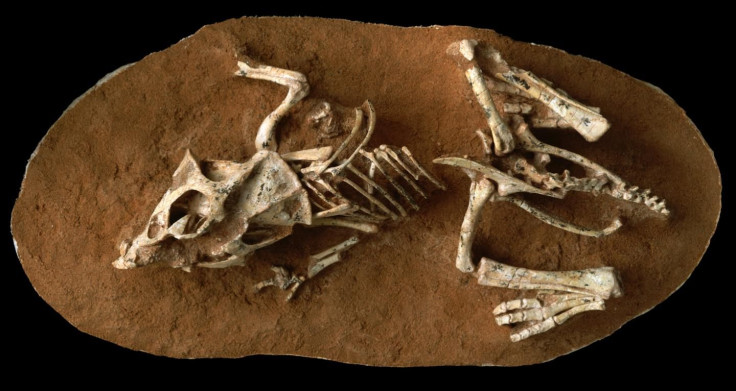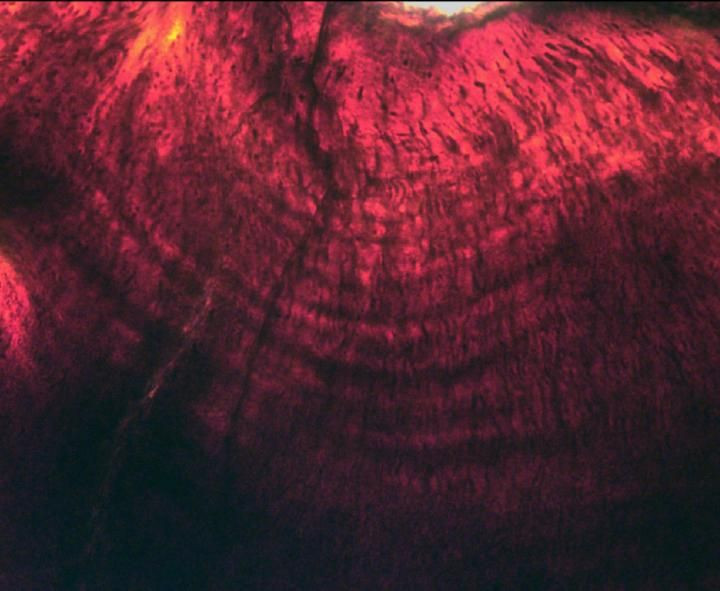Why Did Dinosaurs Go Extinct? Prolonged Egg Incubation May Have Doomed Them From The Start

For the longest time, dinosaurs dominated Earth. Then, 66 million years ago, catastrophe struck — most likely in the form of a giant asteroid that sounded the death knell for these giant, and some not-so-giant, warm-blooded creatures, eventually wiping them off the face of the planet.
Yet, not all dinosaurs vanished. Some of them survived and still exist among us — in the form of birds.
The question, then, is, what enabled birds to survive when their ancestors could not?
A new study, published in the latest edition of the Proceedings of the National Academy of Sciences, describes a finding that its authors believe may have played a role in dinosaurs’ extinction. Their work, based on analysis of fossilized dinosaur embryos, suggests that prolonged incubation of eggs may have affected dinosaurs’ ability to compete with the rapidly reproducing populations of birds, mammals and reptiles following the Cretaceous-Paleogene extinction event 66 million years ago.
“Some of the greatest riddles about dinosaurs pertain to their embryology — virtually nothing is known,” study lead author Gregory Erickson from Florida State University said in a statement released Monday. “Did their eggs incubate slowly like their reptilian cousins — crocodilians and lizards? Or rapidly like living dinosaurs — the birds?”
To find the answers to these questions, the researchers studied fossilized teeth of two types of dinosaur embryos — one from Protoceratops, which was a sheep-sized dinosaur found in the Mongolian Gobi Desert, and the other from Hypacrosaurus, a giant duck-billed dinosaur found in Alberta, Canada.
Specifically, the researchers studied what’s called the von Ebner lines — growth lines present in the teeth of all animals.
“These are the lines that are laid down when any animal's teeth develops,” Erickson said. “They’re kind of like tree rings, but they’re put down daily. We could literally count them to see how long each dinosaur had been developing.”

Their analysis showed that even the relatively tiny Protoceratops embryos took three months to develop. The giant Hypacrosaurus embryo took six months. These incubation periods are much longer than those of birds, and places non-avian dinosaur incubation periods more in line with those of their reptilian cousins.
The authors of the study believe its findings can provide answers to why dinosaurs would have had a hard time adapting to Earth’s rapidly changing conditions, unlike other species at the time that had shorter incubation periods.
Given that even the smallest dinosaurs would have needed at least an year to mature — including the time after hatching — they would have, during this period, been vulnerable to predators, starvation, and environmental disruptions such as flooding. Moreover, these creatures must have required considerably more resources than their avian, mammalian and reptilian cohabitants to reach adult size, and resources would have been scarce in a world devastated by an asteroid strike.
“The dinosaurs found themselves holding some bad cards,” Erickson told the New York Times. “They had a dead man’s hand.”
© Copyright IBTimes 2025. All rights reserved.






















